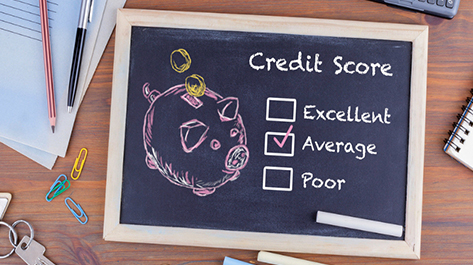Understand Your Credit Score Today!
Financial
October 25, 2021

Whether someone plans to get a mortgage or finance a car, the process can seem a touch daunting — especially if they are unsure of their credit score. Take the time to understand your credit score so you are fully prepared for your future lending needs.
What Are Credit Scores?
A credit score is a number that third parties use to make a risk assessment. For example, if an individual has a high credit score, this means that the risk of lending them money is lower than the risk of lending to someone with a low credit score. This will be based on each individual’s credit history and ability to pay off debts.
In the United States, the most common scoring system is the FICO score. Ranging between 300 and 850, a FICO credit score determines the credit quality of the lendee.
For example:
- Under 630 is considered poor
- Between 630 and 690 is average
- Between 690 and 720 is good
- Above 720 is excellent
What Impacts Your Credit Score?
In terms of how a credit score works, consider the following variables:
- Payment history (influences 35% of a credit score)
- Debt burden (influences 30% of a credit score)
- Length of credit history (influences 15% of a credit score)
- Types of credit (influences 10% of a credit score)
- Recent credit searches (influences 10% of a credit score)
Based on these components, the largest contributing factors are your payment history and overall debt burden. For example, say someone has struggled to make their payments month after month, these late payments will have a significant impact on the associated FICO score — especially if they are not paid within 30 days.
This is particularly true for trivial amounts that were otherwise forgotten. An example would be someone taking out a store credit card, paying $50 on that card and forgetting that they had opened it. Even if that individual showcases responsible payments across all other accounts, that missed $50 payment could dramatically hurt their score.
Debt burden focuses on how much an individual owes, based on their debt-to-limit ratio, also known as credit utilization. A lower credit utilization means that your average balance is low compared to your total credit limit amount, which has a positive impact on your credit score. Carrying a balance that is more than 30 percent of your credit limit can harm your score.
In Summary
The single most important factor in developing and maintaining a good credit score is payment history. However, it is also important not to overlook other important factors such as the average age of accounts and the importance of having different types of credit (i.e. credit card, mortgage, car loan, student loan, etc.). Scores fluctuate based on your activity and balances, so it’s never too late to make positive changes and watch your score rise!
Sources: ValuePenguin, Time



